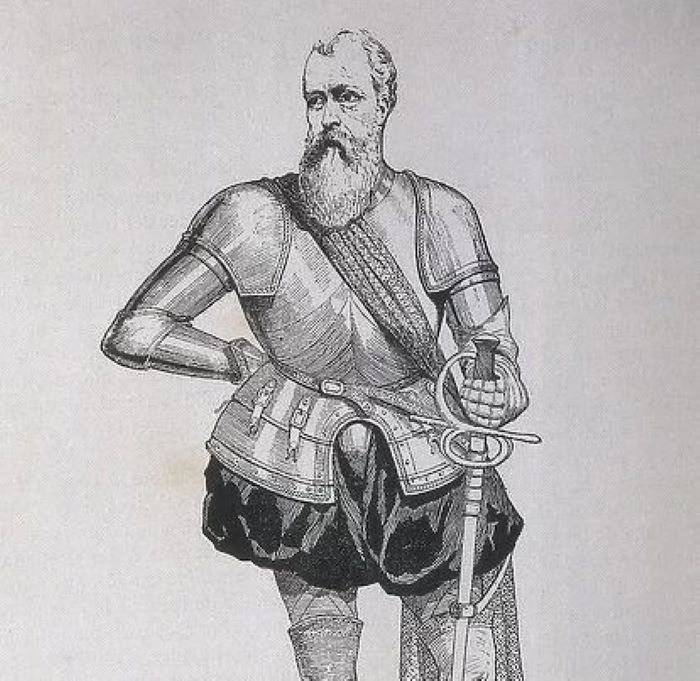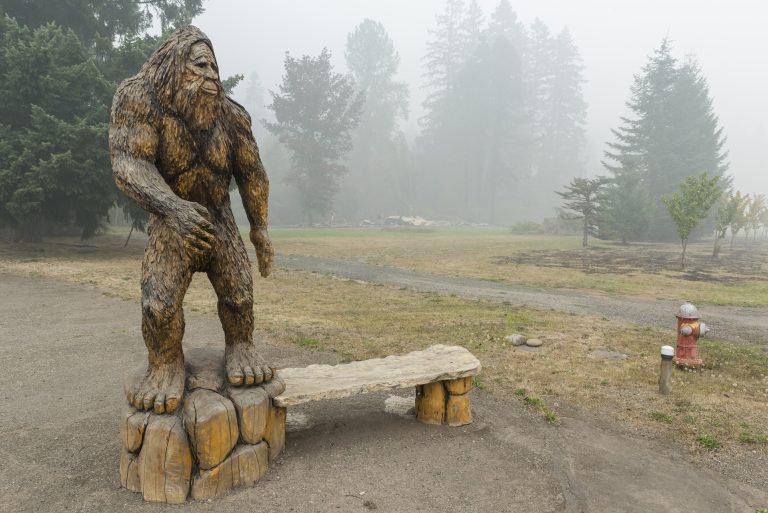On the horizon far from the Pacific Ocean a shipwreck appeared. Or did it? Learn the legend of the Lost Ship of the Desert.
In 1870, articles began appearing in newspapers about the unlikely presence of a great wrecked ship laying within the sands of the California desert, far from the Pacific Coast.
An explorer named Albert S. Evans claimed to have seen it while traveling to San Bernardino. He wrote in the January 1870 edition of The New York Galaxy about how “the moon threw a track of shimmering light, so bright as almost to dazzle the eye of the beholder. Right in this burning pathway of light, far out in the center of the ghostly sea, where foot of man had never trod, lay in the distance the wreck of a gallant ship, which might have gone down there — centuries ago, when the bold Spanish adventurers were pushing their way to the northwest in search of the fabled treasures of the famed Kingdom of Cibola.”
The Sacramento Union ran two articles on the subject that year. On August 31, 1870, an article declared the “wreck of the vessel found in the upper end of the Colorado Desert, south of the road from San Bernardino to Topaz, fully a hundred miles from the sea.” On October 6, 1870, the same newspaper declared that an “advance party of four from San Bernardino have left to visit the famous wrecked ship in the Colorado Desert. The ship, which must have lain a wreck for over 250 years, is built of teak wood, and is perfectly sound. The bow and stern are plainly visible, and she is located 240 miles from the Gulf of California.”
 The legend of the Lost Ship of the Desert is said to have originated from Spanish explorer Hernando de Alarcón, noted for having led 150 expeditions to the Colorado River Delta.
The legend of the Lost Ship of the Desert is said to have originated from Spanish explorer Hernando de Alarcón, noted for having led 150 expeditions to the Colorado River Delta.
On November 12, 1870, the Los Angeles Star reported that a man named “Charley Clusker and a party started out again this morning to find the mythical ship upon the desert this side of Dos Palmas.” On December 1, 1870, the same newspaper stated, “The ship has been found! Charley returns to the desert today, to reap the fruition of his labors.”
Fast-forward to September 27, 1873, when a California newspaper called the Inyo Independent told its readers: “The ship in the desert story, which has heretofore been attributed to a writer's lively imagination, is verified by the Tames expedition explorers. In the California desert, over 200 miles from the Gulf of California, they found the mast of a vessel.”
After their brief flurry of newspaper attention, Albert S. Evans, Charley Clusker, and the Tames expedition explorers vanished into obscurity. Any evidence that a vessel was buried deep within the state’s desert was never corroborated with photographs or retrieved artifacts.
 The alleged lost ship of the desert may have resembled the vessel depicted in Cornelius Verbeeck’s Spanish Galleon Firing Its Cannons (circa 1618) (PHOTOGRAPHY: Courtesy of the National Gallery in Washington, D.C.).
The alleged lost ship of the desert may have resembled the vessel depicted in Cornelius Verbeeck’s Spanish Galleon Firing Its Cannons (circa 1618) (PHOTOGRAPHY: Courtesy of the National Gallery in Washington, D.C.).
So, how did this happen? It is important to remember the newspapers of that bygone era were not obsessed with fact-checking, and publishers trying to goose up readership often resorted to wild legends in lieu of desultory truths. But the mystery of the lost ship in the desert has less to do with the journalism of the day and more to do with how this bizarre tale took root.
If the alleged ship was of European origin, it might have been under the command of Hernando de Alarcón, who navigated the lower Colorado River Delta in 1540 and later reached the site where Yuma, Arizona, is now located. But there is no record of a shipwreck during the de Alarcón expedition or in any of the subsequent journeys in the region by the Spanish explorers.
There are some apocryphal explanations for the lost-ship legend. One involves a Spanish coastal pilot named Juan de Iturbe, whose 50-ton vessel was used for a 1615 pearl-harvesting expedition that had sailed up the Gulf of California but had become stranded in Lake Cahuilla. Forced to abandon the vessel, the expeditioners were said to have retreated to the nearest Spanish settlement on foot. That story first gained prominence in Antonio de Fierro Blanco’s 1933 anthology of legends, The Journey of the Flame.
 The Journey of the Flame was written in 1933 by Antonio de Fierro Blanco.
The Journey of the Flame was written in 1933 by Antonio de Fierro Blanco.
Another legend claimed the craft in question was a Viking vessel, an story that circulated in 1933 when librarian Myrtle Botts recorded claims by people who allegedly saw the ship’s remains and insisted that it had a Scandinavian nautical heritage.
Other claims were more quotidian. One involved a boat that was supposedly hauled across land from a mining camp in 1862 but later abandoned near the Colorado River; another insisted the lost ship was merely an abandoned mid-19th-century ferry boat.
Philip A. Bailey’s 1940 book, Golden Mirages, probably offered the most-likely but least-appealing solution to the mystery of the lost ship. As Bailey wrote, “The usual theory advanced is that it is a mirage. Those who hold to this theory as the only solution of the mystery insist that almost all the exciting tales that come out of the desert are due to mirages.”
Perhaps the most artistic explanation came from poet Joaquin Miller in his 1875 work The Ship in the Desert. In his classic poem, Miller envisioned the brilliant nautical ruin in its desert graveyard while offering a sliver of hope that fantasy of the discovery could permeate reality:
What if this were the Eden true,
They found in far heart of the new
And unnamed westmost world I sing,
Where date and history had birth,
And man first ’gan his wandering
To go the girdles of the earth!

















